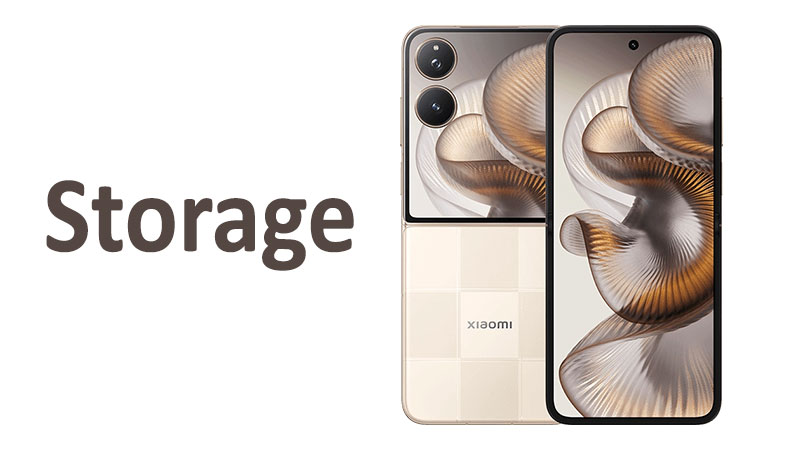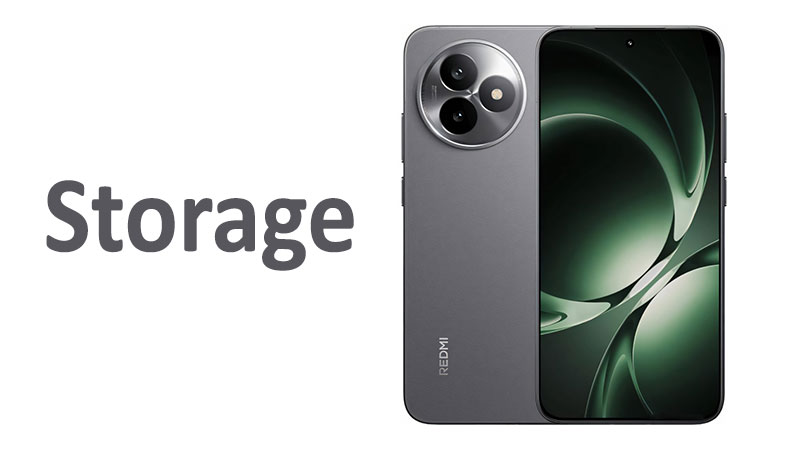Xiaomi 17 Pro Storage capacity and type define its premium performance. The internal memory system is often overlooked by consumers. However, it represents a crucial component of the user experience. The Xiaomi 17 Pro utilizes the cutting-edge UFS 4.1 standard. This choice provides unparalleled speed and efficiency. This detailed article explores the technology, capacity options, and purchasing advice. You will learn how the storage architecture affects daily usage. We also offer a thorough guide to help you select the ideal variant. Understanding these technical specifications is essential for a smart investment. The Xiaomi 17 Pro is built for power users and demanding applications.
Decoding UFS 4.1: The Engine of Speed
The Xiaomi 17 Pro features Universal Flash Storage 4.1 (UFS 4.1). This is currently the most advanced storage standard available. It succeeds the already rapid UFS 3.1 and UFS 4.0 standards. UFS 4.1 is critical for maintaining high performance in a flagship device. It enables faster data access across the entire system. This technology fundamentally improves app loading and file transfer times.
The Technical Edge of UFS 4.1
UFS 4.1 delivers stunning theoretical interface speeds. It achieves up to 23.2 gigabits per second (Gbps) per lane. Consequently, the total bandwidth reaches a staggering 46.4 Gbps. These figures essentially double the speed of the older UFS 3.1 standard. This massive bandwidth increase eliminates performance bottlenecks completely.
Sequential read speeds can peak near 4,200 megabytes per second (MB/s). Write speeds also climb to approximately 2,800 MB/s. These metrics are vital for today’s high-demand tasks. They facilitate immediate app launches and quick installation processes. Furthermore, they are crucial for smooth, high-bitrate video recording.
Specialized Comparison: UFS 4.1 Versus UFS 3.1
The performance leap from UFS 3.1 is highly significant. The UFS 3.1 standard offered sequential read speeds of about 2,100 MB/s. Its sequential write speeds were around 1,200 MB/s. The newer UFS 4.1 standard nearly doubles both of these specifications. This speed disparity impacts almost every daily operation.
App installation finishes noticeably faster on the Xiaomi 17 Pro. Loading screens in graphic-intensive games also become much shorter. In addition, UFS 4.1 boasts superior power efficiency. It is approximately 46% more efficient than the UFS 3.1 version. This improved efficiency helps maintain battery life during heavy data use. Consequently, the Xiaomi 17 Pro offers longer usage periods under duress.
UFS 4.1 Versus Other Competitor Storage Types
Many mid-range phones still rely on UFS 3.1 or even older eMMC storage. EMMC storage is significantly slower than UFS technology. It typically maxes out at speeds near 400 MB/s. The UFS 4.1 in the Xiaomi 17 Pro offers ten times that speed. This difference provides a substantial performance gap.
Some competing flagship devices use specialized NVMe mobile storage. However, UFS 4.1 often matches or surpasses this NVMe performance. Modern UFS modules also offer superior integration into the mobile chip architecture. This integration provides the Xiaomi 17 Pro with a significant advantage. This performance edge shows up in overall system responsiveness.
Key Innovations Embedded in UFS 4.1
UFS 4.1 introduces several critical features beyond raw speed. These innovations contribute to system stability and user safety. They greatly enhance the experience of storing and accessing data.
The WriteBooster Advantage Explained
The specialized WriteBooster feature significantly improves the peak write performance. It designates a small portion of the main memory as a fast SLC buffer. This SLC (Single Level Cell) buffer handles data writes much quicker. UFS 4.1 optimizes this feature for better resource management overall. The phone’s processor can dynamically adjust the size of this buffer. This optimization drastically speeds up large downloads and video capture.
UFS 4.1 also supports the partial flushing of the WriteBooster buffer. This new capability allows the system to keep specific data in the buffer. It prevents the device from unnecessarily flushing all buffered data at once. This fine-grained control improves system responsiveness during demanding multitasking scenarios.
Enhanced Security with Advanced RPMB
Data security remains essential for all top-tier smartphones. UFS 4.1 implements advanced protection via the Advanced Replay Protected Memory Block (RPMB). RPMB is a dedicated secure area in the flash memory. It reliably stores sensitive data like passwords and digital keys.
Advanced RPMB in UFS 4.1 offers enhanced transaction performance. It now protects larger data sizes per input/output (I/O) transaction. This upgrade strengthens the Xiaomi 17 Pro’s defense against cyber threats. It ensures the most critical user data remains securely protected.
Faster Initialization with HS-LSS
High-Speed Link Startup Sequence (HS-LSS) is another vital enhancement. Older UFS standards required the link startup to happen at a very slow rate. HS-LSS allows this initialization to occur at a much faster speed. This change reduces the link startup time by roughly 70%. For the user, this means the phone boots up more quickly. It also reduces lag when the storage initializes after deep sleep mode.
Xiaomi 17 Pro Storage Capacity Options
The Xiaomi 17 Pro offers buyers three distinct storage configurations. Customers can choose between 256GB, 512GB, and a massive 1TB internal memory. All three options are paired with the same high-speed UFS 4.1 technology. Your ultimate choice depends heavily on your usage habits and budget constraints. Each capacity tier is tailored for specific types of smartphone users.
The 256GB Variant: Performance and Value
The 256GB model serves as the entry-level option for the Xiaomi 17 Pro. For most everyday smartphone users, 256GB is more than enough space. This capacity comfortably manages a large array of applications. It can store thousands of high-resolution photos and hours of HD video content.
Pros and Cons of 256GB
The primary advantage is its excellent affordability. It provides the same peak UFS 4.1 speed as the larger, more expensive models. This makes it a fantastic value proposition for the average consumer. Users get flagship performance without the associated top-tier price increase.
The main drawback is potential long-term restriction. File sizes continue to grow with higher fidelity media. 4K and 8K video files, lossless music, and massive games consume space quickly. Content creators and dedicated mobile gamers might find 256GB limiting. They may need to rely heavily on continuous cloud storage solutions.
Who Should Choose 256GB?
The 256GB Xiaomi 17 Pro suits the average consumer best. This includes users who mainly stream their media content. It is ideal for people who regularly back up their media to the cloud. It is perfect for those who do not install many massive game titles. This capacity offers adequate future-proofing for standard usage patterns.
The 512GB Variant: The Balanced Power User Choice
The 512GB model hits a sweet spot between capacity and cost. It caters effectively to the heavy user and the modern content enthusiast. This variant removes most concerns about running out of space quickly. It provides a comfortable buffer for high-volume, continuous usage.
Pros and Cons of 512GB
The biggest benefit is the excellent balance it provides. The 512GB capacity allows storing large local media libraries. You can download numerous console-quality games without hesitation. Furthermore, it supports extensive, continuous high-resolution video shooting. This capacity ensures the phone remains relevant for an extended period. You will rarely need to manually manage storage space.
The main disadvantage is the moderate price premium. The cost difference is certainly notable compared to the 256GB model. However, the added peace of mind often justifies the investment. If your usage fluctuates, this capacity provides necessary safety.
Who Should Choose 512GB?
The 512GB Xiaomi 17 Pro is the logical choice for many users. It is suitable for serious mobile photographers and vloggers. Users who frequently record high-quality 4K video will benefit immensely. People who desire a large music library stored locally also fit this profile. This is the optimal choice for balance and robust functionality.
The 1TB Variant: Unrestricted Storage Dominance
The 1TB model is the ultimate configuration for the Xiaomi 17 Pro. This huge capacity is designed for the absolute power user. It is perfect for professional creative workloads and maximum longevity. This variant essentially eliminates all storage limitations.
Pros and Cons of 1TB
The biggest pro is the complete freedom it provides. The 1TB capacity allows users to treat their phone like a primary computing device. You can shoot and edit huge 8K video projects directly on the phone. You can also keep dozens of massive games installed simultaneously. This capacity offers maximum future-proofing against all trends.
The obvious disadvantage is the significantly higher price point. This option commands a substantial premium over the other variants. For many users, this extra cost may never translate into actual usage. If you never utilize more than 500GB, this investment might be excessive.
Who Should Choose 1TB?
The 1TB Xiaomi 17 Pro is the clear choice for specific, demanding user groups. Professional videographers recording raw 8K footage require this space. Dedicated content editors and filmmakers will also need it. Users who keep their phones for four or more years should also consider 1TB. Finally, anyone who simply requires the absolute best specifications available should choose this model.
Comprehensive Buyer’s Guide
Selecting the correct storage capacity is the most important decision at purchase. The speed provided by UFS 4.1 is consistent across all models. The capacity, however, directly influences both cost and long-term usability. Consider these detailed factors before making your final purchase.
Assessing Your Digital Footprint
Begin by examining your existing phone’s storage habits. Are you constantly fighting to keep space clear on a 128GB or 256GB device? If you frequently hit the storage limit, jump to the next tier immediately. The 512GB or 1TB option will prevent future frustration. Conversely, if your current usage is consistently below 100GB, 256GB is totally sufficient. Be honest about your downloading and media accumulation habits.
High-Demand Use Cases and File Sizes
Modern mobile gaming aggressively pushes storage requirements. Console-quality titles often demand 10GB or even 30GB of space each. A collection of only ten major games could consume most of the 256GB base model. Think realistically about the number of large games you want installed.
Video recording remains the quickest consumer of high-speed storage. Recording 4K video at 60 frames per second uses massive amounts of space. Shooting in the new 8K format accelerates this consumption even further. Content creators who shoot extensive raw footage must choose 512GB or 1TB. UFS 4.1 ensures these huge files write instantly without dropping frames.
Future-Proofing and Longevity Investment
The capacity decision significantly affects the device’s lifespan. Even if 256GB meets your current needs, consider future growth. App sizes are consistently increasing every year. Operating systems and security updates also demand more space over time. Investing in the 512GB or 1TB model is a financial safeguard. It delays the inevitable point where storage constraints force an expensive upgrade.
The Role of Cloud Services in Storage
The need for large local storage is often mitigated by cloud solutions. Services like Google Photos, Dropbox, or OneDrive are excellent for offloading old media. If you rely heavily on the cloud, the 256GB model becomes a compelling option. You can safely delete local copies of older photos and videos.
However, cloud dependence always requires a fast, stable internet connection. Instant access to high-fidelity videos or large work files demands local storage. If you travel frequently or face unreliable connectivity, choose 512GB or 1TB. These larger variants offer independence and instant UFS 4.1 access.
Comparison: Xiaomi 17 Pro vs. Previous Models
The Xiaomi 17 Pro represents a significant jump in storage architecture. Previous Xiaomi flagships likely used UFS 3.1 or a lower-tier UFS 4.0 variant. The inclusion of UFS 4.1 marks a clear commitment to peak performance. This upgrade provides a nearly 100% boost in sequential speeds. This makes the Xiaomi 17 Pro noticeably faster than its predecessor. Buyers upgrading from older models will feel this speed difference immediately.
Why Expandable Storage is Absent
The Xiaomi 17 Pro, like most current flagships, does not support microSD card expansion. This is a common industry decision for high-performance devices. External card interfaces cannot match the speed of internal UFS 4.1. Furthermore, integrating the internal UFS architecture is more complex. Therefore, selecting the correct internal capacity at purchase is absolutely mandatory.
The Daily Performance Impact of UFS 4.1
UFS 4.1 is far more than just a technical specification number. It fundamentally changes how users interact with their phone daily. The enhanced speed and efficiency translate directly into a superior overall experience. Understanding these practical effects reinforces the true value of the Xiaomi 17 Pro.
Faster Booting and App Loading Times
The High-Speed Link Startup Sequence (HS-LSS) ensures the Xiaomi 17 Pro boots up very quickly. More importantly, UFS 4.1 greatly reduces application launch times. Even the most complex and demanding apps launch almost instantly. This speed gives the phone a perceived responsiveness that is clearly noticeable.
Enhancing Mobile Gaming and Multitasking
Mobile gaming benefits significantly from the UFS 4.1 standard. Large game asset files and texture data load from storage into RAM much faster. This drastically reduces the time spent on annoying loading screens. Lower latency in the storage system translates directly to much smoother gameplay.
The Multi-Circular Queue (MCQ) feature, refined in UFS 4.1, is crucial here. MCQ allows the processor to efficiently prioritize I/O commands for simultaneous tasks. The Xiaomi 17 Pro can easily manage a high-performance game and a large background download. This simultaneous data access makes complex multitasking more efficient than ever before.
Power Efficiency and Thermal Management
The optimized UFS 4.1 design achieves impressive energy savings. It requires significantly less power during intensive read and write operations. This improvement, up to 46% better than UFS 3.1, extends the battery life. Users can perform intensive tasks for much longer periods.
Furthermore, a lower power draw means less heat generation. Better thermal management helps prevent immediate performance throttling issues. The Xiaomi 17 Pro maintains its high speeds longer during extended gaming or video editing. This cool operation protects the storage chip and preserves long-term battery health.
Deep Dive: Optimizing the Storage System
Xiaomi uses sophisticated software optimization to fully utilize the UFS 4.1 hardware. The tight integration of the operating system (HyperOS) with this high-speed storage is key. Xiaomi works to maximize the potential of this advanced technology for its users.
Software and Hardware Synergy
The HyperOS operating system intelligently manages data requests. The software dynamically uses the WriteBooster buffer for temporary high-speed tasks. This guarantees the fastest sequential write speeds when the system requires them. For example, the system automatically triggers the WriteBooster when recording high-bitrate 8K video. This action prevents the buffer from overflowing and ensures smooth frame integrity.
The UFS 4.1 specification also natively supports Zoned UFS features. This feature improves the read-write efficiency significantly. It reduces unnecessary data relocation within the flash memory chip. This vital reduction in “write amplification” extends the overall lifespan of the NAND flash. It ensures the Xiaomi 17 Pro’s storage remains durable and reliable for many years.
The RAM and Storage Connection
The incredible speed of the Universal Flash Storage affects RAM efficiency. The system constantly needs to exchange data between fast RAM and slower storage. UFS 4.1 facilitates this process instantly and efficiently. This synergy substantially enhances the phone’s overall system memory performance. The result is a device that experiences almost no stuttering, even under extreme system load.
Storage Longevity and Reliability
All flash storage inevitably degrades slightly over time. It wears out after a specific number of write and erase cycles. UFS 4.1 components utilize high-quality NAND flash technology. Paired with intelligent controllers, they offer exceptional data durability. The advanced memory management functions actively minimize wear and tear. This ensures the Xiaomi 17 Pro storage maintains its high performance and reliability across its entire lifespan.
Final Conclusion and Investment Advice
The Xiaomi 17 Pro Storage package is truly an industry leader. It perfectly combines the blistering speed of UFS 4.1 with three practical capacity choices. This powerful synergy ensures the device handles all current and future mobile demands easily. The UFS 4.1 technology is a vital investment in both responsiveness and longevity. It delivers double the sequential speed and superior power efficiency over its predecessor.
Choosing between the 256GB, 512GB, and 1TB requires a simple, honest self-assessment. If you are a light or moderate user, the 256GB model offers exceptional value. It gives you flagship UFS 4.1 speed at the most accessible price point. If you are a dedicated gamer, a heavy content creator, or someone who keeps a device for years, choose the 512GB or 1TB Xiaomi 17 Pro. The higher capacity is an essential investment to future-proof your usage. Ultimately, the Xiaomi 17 Pro delivers premium storage performance regardless of the specific capacity you select. The speed and efficiency of UFS 4.1 will drastically redefine your entire smartphone experience.
Frequently Asked Questions (FAQ)
1. What is the maximum sequential write speed of the Xiaomi 17 Pro’s storage?
The Xiaomi 17 Pro uses UFS 4.1 storage technology. This allows for sequential write speeds up to approximately 2,800 MB/s.
2. Is there a performance difference between the 256GB and 1TB models?
No. All capacity variants, including 256GB, 512GB, and 1TB, utilize the same high-speed UFS 4.1 standard. The speed performance remains completely consistent across all models.
3. How does UFS 4.1 improve 8K video recording on the phone?
UFS 4.1 ensures instantaneous data writing. This prevents dropped frames and buffer overflows during demanding 8K video capture. Its high speed handles the massive data flow easily.
4. Does the Xiaomi 17 Pro support expandable storage using a microSD card?
The Xiaomi 17 Pro does not feature a dedicated microSD card slot. This is standard for most premium flagship devices. Users must select the internal capacity that meets their long-term needs.
5. What makes UFS 4.1 more power efficient than UFS 3.1?
The UFS 4.1 standard features a more streamlined architecture. This allows it to complete I/O operations faster and draw less power during active use. This saves significant battery life.



